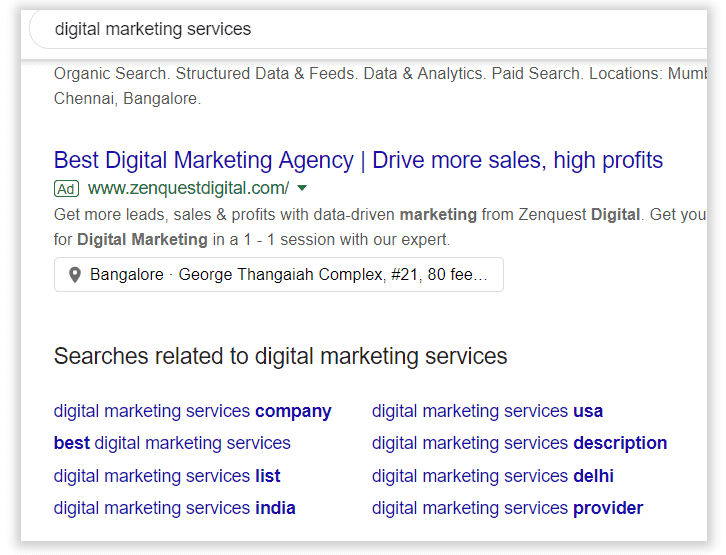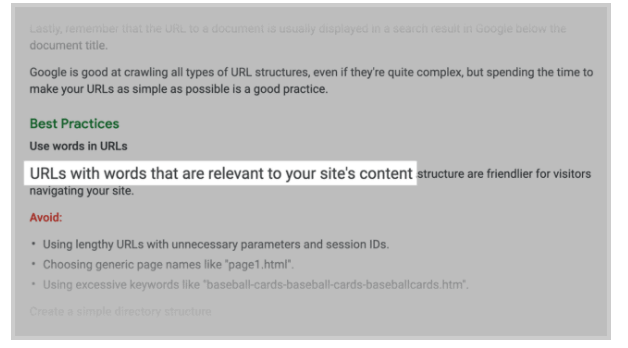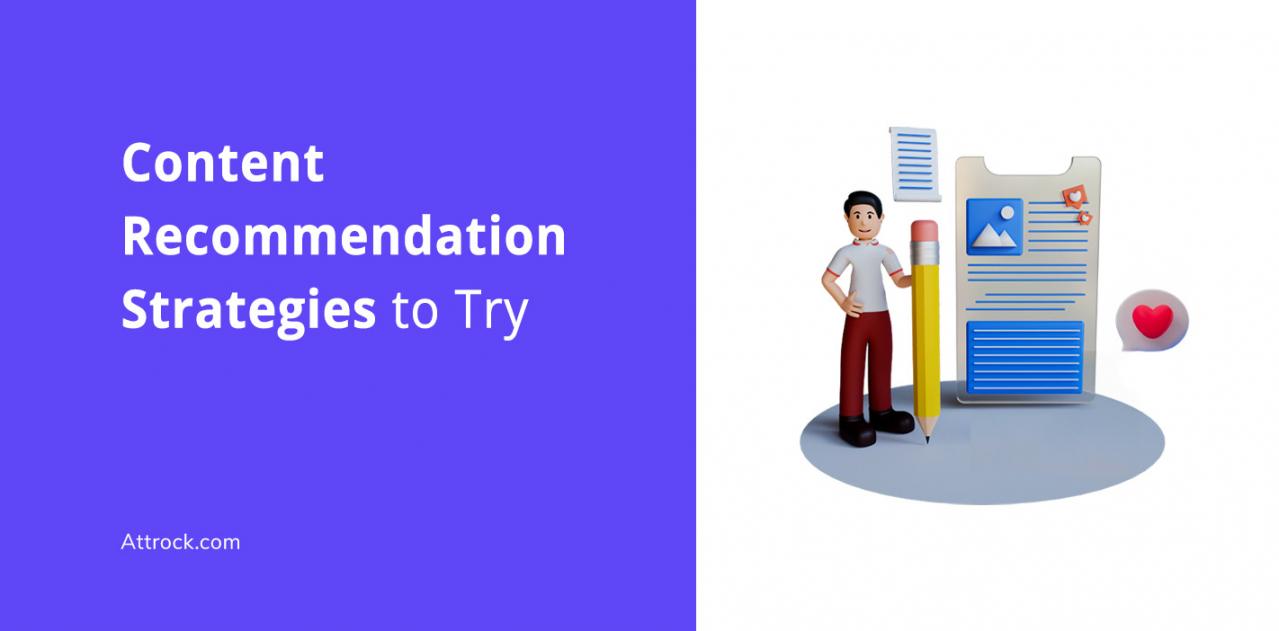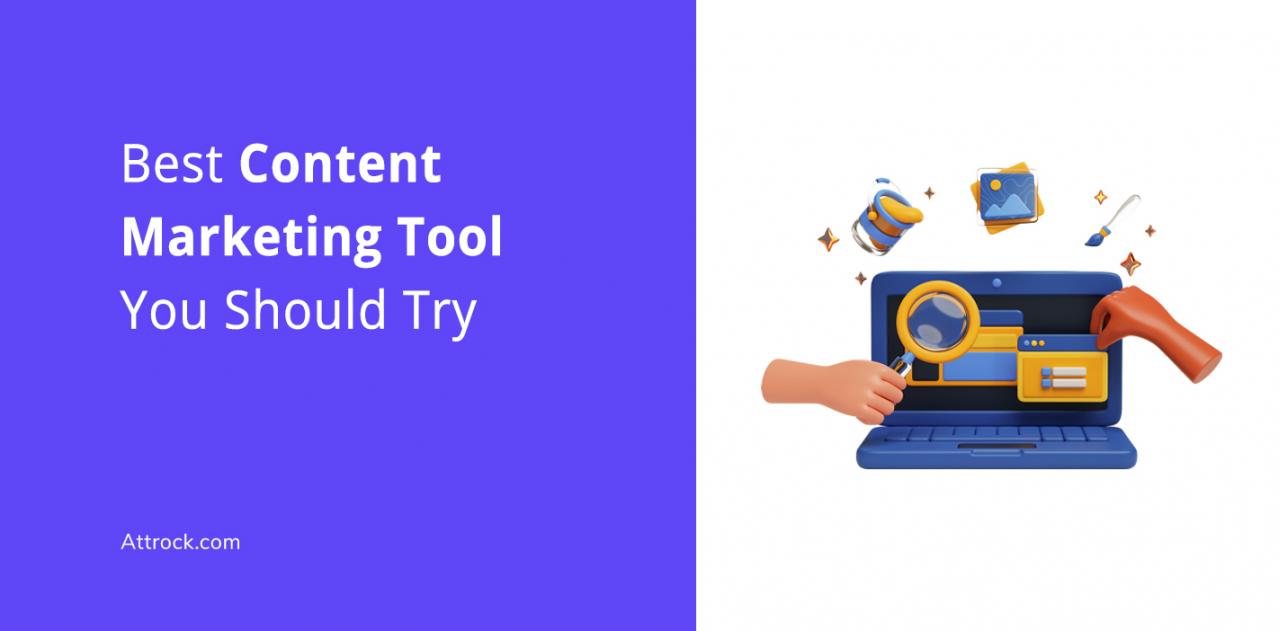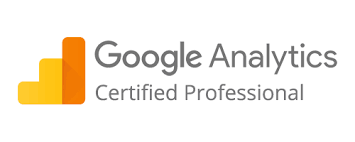Many website owners still believe that keyword stuffing is the key to successful website content. While your content has to be SEO-friendly, crafting impressive web pages requires a good balance of creativity and marketing skills.
According to a recent report, there are about 2 billion websites in the world. That number is increasing day by day. However, shockingly enough, more than 80% of them are inactive.
Among other reasons, poor website content could be a reason for a website’s poor performance or deactivation.
So, this begs the question: What does it take to write good website content that impresses your visitors as well as search engines?
To answer this perplexing question, we’ve created this step-by-step guide on how to write content for websites to turn visitors into leads and help your business grow.
Disclaimer: This content contains some affiliate links for which we will earn a commission (at no additional cost to you). This is to ensure that we can keep creating free content for you.
Table of Contents
How to Write Content for Websites That Search Engines Will Love
Creating content for websites is not an easy task. You have to compete with thousands of websites, deal with ever-changing search engine algorithms, make sure the content passes AI content detection and plagiarism checks and most importantly cater to the needs of a target audience.
All you need to do is follow this strategy step by step:
1. Set Goals for Your Website
You must have set some goals when you first decided to start your website. It’s time to revisit them when you start creating your web content.
But why?
Only when you know your goals can you create content that helps attain them. Not only that, goal setting facilitates content testing as well. You can test your content objectively only when you know exactly what you aim to achieve with that content.
So, start the content creation process by identifying your website’s goals. Do you aim to increase your sales or attract new customers? Or, do you want to redirect traffic to your brick-and-mortar stores? Define your website’s objectives so that you know what to write and how.
2. Understand Your Audience
Now that you know your goals, it’s time to understand the goals and interests of your audience.
Why so?
Because your website content should fulfill both goal sets.
While researching your audience, you need to look beyond their age, demographics, and niche. Dig deeper and unearth hidden parameters, including their:
- Attribution Path: Visitors who land on your site after clicking on ads will have different expectations than those who come from search results.
- Expertise Level: If your visitors are technically savvy, you can write sophisticated web copy for them. But the same copy might fail to engage technically-challenged people.
- Search Intent: Your visitors’ search intent (transactional, navigational, or informational) will govern the kind of content you will serve them.
- Content-consumption Habits: Do they like long-form or short-form content? What kind of content do they share on social media? By answering these questions. You can create engaging and share-worthy website content for yourself.
- Choice of Multimedia: Website content can go beyond simple text. That’s why it’s necessary to understand what kind of multimedia your audiences prefer. According to HubSpot’s State of Marketing report, short-form videos generate strong results because they’re engaging and easy to consume.
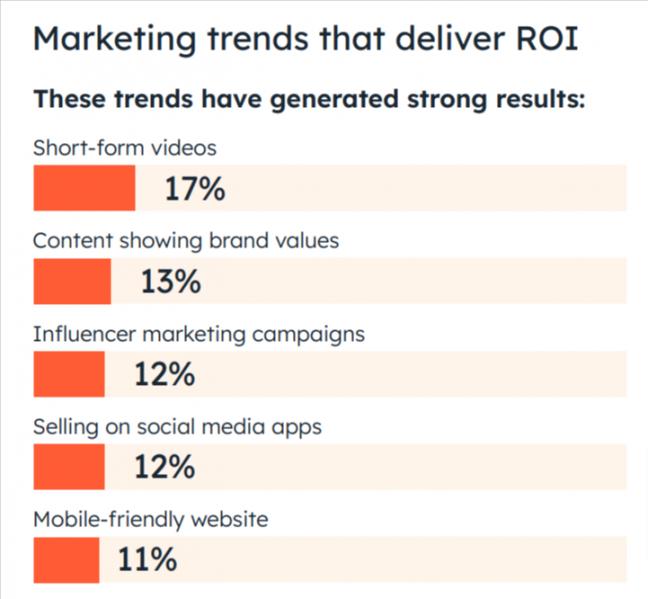
Image via HubSpot
A quick analysis of your competitors’ websites and recent trends provides comprehensive insights into what kind of videos you should invest in. A good mix of storytelling and visual representation helps create a great impression among your audience.
3. Analyze Your Competitors’ Content
To create standout website content, you need to keep an eye on your competitors’ content strategies as well.
Why?
Because competitive analysis:
- Gives you a competitive advantage.
- Reveals industry trends in content writing.
- Helps benchmark your website performance.
- Inspires new content ideas.
- Discover profitable traffic sources.
In short, you understand what kind of website content you’re up against. Armed with that business intelligence, you can create a superior product. Moreover, you can exploit weaknesses in their content to outrank them on search engine results.
To gather competitive insights, you can use analytics tools like SimilarWeb and Semrush.
4. Start Writing Content for Each Page
Now that you’ve done all the legwork, you are in a better position to start creating content for your website.
So how do you get started?
Just follow these steps:
Step 1: Identify Your Key Pages and Their Goals
Though websites differ widely in design and architecture, most of them have these five or six key pages:
- Homepage
- Products/Services
- About Us
- Contact Us
- Pricing (Optional)
- Blog/Resources (Optional)
In addition, you may also have a few landing pages (with a single, well-defined goal). They prompt your website visitors to perform a desired action, such as:
- Submitting their contact information
- Purchasing a product/service
- Clicking through to another web page
Your task during this stage is to identify your key pages and landing pages and arrange them in a rough framework. Determine the goal of each web page and plan how the web pages will be linked to each other.
Step 2: Find and Use Target Keywords
Keyword optimization is an integral part of website content writing. It makes your content more discoverable and helps attract traffic organically. In fact, moving up by one spot on the SERPs can improve your CTR by 32.3%. That’s huge, by any standard!
To create a crawler-friendly web copy, follow these steps:
- Start the process by identifying some broad topics that your target audience looks for when searching content similar to yours.Think about your key services/products or pick topics that are your forte. Compare search volumes of all these topics (using web analytics tools like Google Analytics) and finalize the ones worth investing in.
- Once you have a list of relevant topics to target in your web copy, you will need to find keywords anchored to them. These will be broad, generic “seed keywords” like digital marketing, home improvement services, etc.
To find seed keywords, consider how potential searchers might look for digital marketing sites. They could enter keywords directly into search engines, use Google’s auto-suggestions, or check “Related Searches” at the bottom of the results page.

Image via Google
Another way to go about it is by comparing your traffic sources. Figure out which topics/content pages are driving maximum organic traffic to your website. Target these keywords and capitalize on the authority you’ve already created.
You can also improve your SEO results by taking inspiration from your competitors’ strategies. Simply pick the keywords they are ranking for and create better content to beat them at their game.
Narrow down your list of keywords by comparing their keyword difficulty and competition.
In your final list, you should have a good mix of short, generic keywords (head terms) and long tail keywords (of 3 or more words). But for each page, there should be a single main target keyword and a few side keywords with decent search volumes and low to moderate competition.
- Now, we come to the most important aspect of SEO content writing: keyword placement. Where and how should you place keywords strategically so that they don’t look stuffed but still catch the attention of crawlers?
- Page URLs. Even Google’s guidelines say URLs should be contextual.

Image via Google
- Page Titles and Subheaders. Front-load your titles with keywords and try keyword-enriching one or two H2s as well.
- Meta Descriptions. Introduce keywords as early as possible in your meta descriptions. Avoid boilerplate (repetitive) descriptions for related pages.
- Meta Titles. Instead of using vague titles like “home,” craft descriptive yet concise (under 60 characters) titles. Branding your titles is also essential.
- Body Content. Incorporate main and side keywords into your content as naturally as possible. Look for semantically-similar keywords to bring variety.
- Image alt tags. Crawlers can’t capture context behind images if not told explicitly through tags. Don’t exceed 125 characters since screen readers can’t read beyond that.
Pro Tip: If your page allows, include an FAQ section in it. FAQs are an opportunity to include long-tail keywords in question format. This way, you can capture voice search queries, which tend to be questions, longer than textual queries.
Additionally, if you pick questions with a high search potential, crawlers can feature your answers in the “People also ask” section of the SERPs as well.
Step 3: Determine Content Length and Write Readable Content
Should your content be long-form or short? While there’s no cookie cutter answer to that question, HubSpot’s research proves that long-form content (with a median length of 2,164 words) is the best for lead generation.
However, content length actually depends on page goals, page type, and topic complexity.
If your page is an infographic, you can’t go overboard with content length. Your content should be crisp and to-the-point. Blog posts, on the other hand, should be detailed and insightful so that they offer value to readers.
Whatever be your ideal page length, ensure that the content is high on readability. You can use a good mix of bullet points and multimedia to make your content easy to scan. The best web content is written with humans in mind, not search algorithms.
To write easy-to-read content, follow these best practices:
- Break heavy content into digestible chunks by using bullet points and paragraphs.
- Use proper H1s and H2s, and include a ToC in blog posts so that readers can skip to sections that interest them.
- Catch readers’ attention by highlighting important information.
- For actionable content, include powerful calls-to-action (CTA) at short intervals
- Write in an active voice and conversational tone to speak directly to the readers on a personal level.
- Stay away from jargon. Internal-link technical terms to informational pages.
One more thing…
Don’t forget the power of visuals in web content. They can help break the monotony, beautify your site, and engage website visitors. Moreover, people can retain and recall visuals better than plain text since the human brain is programmed so.
And here’s the cincher. Images, videos, and infographics are visually appealing and are also known to increase conversions.
In a survey conducted by Wyzowl, 82% of marketers say that video content can help retain site visitors for a longer time, thus increasing their website’s dwell time.

Image via Wyzowl
But rich media can make your pages sluggish and slow to load. To keep them from disrupting the UX, adopt advanced web page content optimization techniques.
That said, let’s come to the crux of web content writing: content quality.
While visuals and white space can enhance your content’s presentation (and that matters a lot with click-happy web users), they can’t make up for content that lacks depth. Thin and duplicate content can turn off users, no matter how well it is packaged.
For online writing that delivers value at one glance, here are some things you can do:
Focus on Benefits, not Features
When promoting products/services, highlight how they will benefit end users. It’s no use listing a million features if you aren’t going to explain how they help simplify users’ lives.
Keep Your Page Goals in Mind
Remember, the page goals we discussed earlier? Bring them back to focus and write content that drives users towards fulfilling them.
Use the Inverted Pyramid Theory
Deliver the most important information first because netizens have short attention spans. For instance, if you manufacture cameras, explain the USPs of your product first. You can always elaborate on lesser important things like how your camera works later.
Write Persuasive Copy for Each Web Page
Using consumers as a vantage point, write content that they are looking for. What kind of concerns can they have regarding your products/services? Why should they buy from you? Then, create content that addresses their concerns. To do this, use social proofs (reviews and testimonials), refer to successful case studies, include an FAQ section, etc.
Push Your Limits
There are no hard and fast rules for web content creation. If required, you can stray from grammar rules or write catchy headlines that don’t necessarily conform to guidelines. Even a micro-element like a call-to-action can make a huge difference to your content performance. So, experiment with all your website elements until you find standout content.
Write Action-Oriented Content
The whole exercise of writing web content will be futile if it doesn’t prompt action from consumers. To avoid that, use plenty of action words like click here, get started, book a demo, etc. Use internal links to guide users toward your conversion goal smoothly. If nothing else, ask users to leave comments or share your content on social media.
Proofread, Proofread, Proofread
Typos and misspellings are blunders you need to avoid at all costs when writing content for your website.
To avoid them, use online editors like Grammarly to proofread your content. It not only flags wordy sentences and spelling errors but also scores your content against global benchmarks (in the premium package only). Plus, it pinpoints the content’s grade level and suggests better word choices, simplifying your editing process to a great degree.
A/B Test Your Content
There’s always scope for improvement in content writing. Test your content rigorously and constantly.
Create iterations of each landing page headline and call-to-action, and test them on real users. Or, you can use a headline analyzer tool like CoSchedule to test your headlines instantly. You’ll be surprised how much difference a single word’s replacement can make to your overall content performance.
Step 5: Enrich Your Website Content
Now that you know how to write content for websites, let’s explore a few expert tips for optimizing it to educate, engage, and convert new visitors.
Add Compelling Calls to Action
The ultimate goal of website content is to move visitors into action. Including multiple CTA buttons on your web page can nudge site visitors to navigate further, explore your products, or find out more about the special deals on offer.
Consider Salesforce’s homepage. Along with writing informative content, the brand has strategically placed different calls to action to interact on a deeper level with the visitors and convert them.

Image via Salesforce
Based on the target market, you can craft a variety of calls to action. Not all buttons should necessarily lead to a sale. Even getting your visitors to opt for a demo, sign up for your newsletter, or download gated content would be beneficial. Once you get their contact details, you can nurture these leads further to build your sales funnel.
Enhance Credibility by Adding Social Proof
The potential customers who are visiting your website would definitely compare your offering with your competitors. What would distinguish you from other brands is your reputation as a B2B or B2C company.
Including elements of social proof will boost your credibility to the next level. You can be creative as to what kind of social proof you want to add and how best to hook your visitors with this. However, as a guide, preferred elements include:
- Google review widgets
- Awards and recognitions
- Customer portfolio
- Client testimonial videos
- Brand story and employee testimonial videos
Leverage Web Pages for Self-Promotion
As a brand, it’s no surprise that you create a variety of content. The best place to inform your prospects about your offerings is your website. Self-promotion is an integral part of your content marketing strategy.
What do we mean by self-promotion?
Take a look at this popup that appears on Search Engine Journal’s website. It contains all the details about their upcoming webinar. As people who visit this website are already interested in their content, the chances of them registering for the webinar are much higher.

Image via Search Engine Journal
Similarly, you can promote your blog posts, social media contests, latest products or services, gated content, and much more. These kinds of self-promotional techniques are absolutely free and can be highly effective in boosting your conversion rate.
FAQ
Q1. How do I write content for my website?
A. Here is a four-step strategy to write great content for your website:
- Identify the goals for your page.
- Understand your audience’s search intent.
- Analyze your competitors’ website content.
- Write readable, authoritative content for your website. To do that:
- Find target keywords and use them strategically in titles, URLs, and meta descriptions.
- Write catchy headlines and test them using a headline analyzer tool.
- Use white space, numbered lists, and paragraphs to break content.
- Deliver important information first.
- Incorporate visuals into your content in relevant places.
- Focus on explaining your product’s benefits to end users.
- Use compelling CTAs.
- Test your content rigorously.
- Proofread again and again.
Q2. How can I optimize my content for SEO?
A. To optimize your content for SEO, incorporate relevant keywords naturally throughout your text to enhance search visibility. Craft compelling meta titles and descriptions to attract clicks. Additionally, use internal links to guide readers to related content on your site and external links to credible sources, boosting authority and relevance.
Q3. What are the basic contents of a website?
A. While website structure can vary widely, most websites contain these key pages:
- Homepage
- Products/Services/Features
- About Us
- Contact Us
- Pricing (optional)
- Resources (optional)
Q4. Which content is best for a website?
A. Great website content has the following qualities:
- Readable: It is scannable
- Keyword-optimized: It is searchable
- Unique: It offers new information or a new perspective
- Valuable: It delivers value to readers
- Authentic: Its information is conceptually correct
- Compelling: It has sufficient social proof
- Action Oriented: It prompts readers to perform a desired action
Q5. How often should I update my content?
A. You should review and update your content at least every six months or whenever there are significant changes in your industry or new information becomes available. Fresh content improves search rankings, keeps your audience engaged, and ensures that your information remains accurate and relevant. As a result, you can build trust and credibility with your visitors.
Q6: What tools can help with writing website content?
A. Tools like grammar checkers (e.g., Grammarly, Hemingway editor) help ensure your writing is clear and error-free. SEO tools, such as Google Keyword Planner, assist in identifying relevant keywords to improve visibility. Content management systems (like WordPress) streamline the writing, editing, and publishing process, making it easier to manage and optimize your website content.
Q7. How important is website content?
A. Website content is a game-changer for digital brands. It fosters consumer trust and helps convert random website visitors into loyal customers. Not only that, great content keeps visitors engaged and enhances the UX, which helps improve search engine rankings in a big way. That’s why content quality is an important ranking factor for search engines.
Q8. Why is website content essential for SEO?
A. Website content is vital for SEO as it boosts search performance. Keyword-rich content improves on-page SEO and rankings, while high-quality content keeps visitors engaged, reducing bounce rates. Additionally, effective content helps with interlinking, enhancing weaker pages, and increasing dwell time.
Q9. What is the most important part of a website?
A. Content is undoubtedly the most important part of a website. Authoritative, useful content has the potential to boost your search engine rankings. At the same time, the importance of content presentation can’t be undermined. Great content, if packaged unattractively, will fail to engage website visitors.
Q10. How do you write attractive content?
A. Attractive content is easy on the eye and easy to digest. To create it, implement these tips:
- Use proper H1s and H2s.
- Break chunky text into paragraphs and lists.
- Use ample white space.
- Use formatting and typography to catch attention.
- Intersperse text with visuals.
Write Compelling Content to Turn Site Visitors into Leads
To sum up, start the content-creation process with goal setting. Try to align your business goals with search intent. Next, analyze the content that already exists on the web. Then, proceed with keyword research to figure out what to write about. Last, start writing content, keeping best practices in view.
Once you practice our four-step strategy again and again, you should be a pro in writing website content. Don’t forget to share the challenges you faced, in the comments section.
Disclaimer: This content contains some affiliate links for which we will earn a commission (at no additional cost to you). This is to ensure that we can keep creating free content for you.
